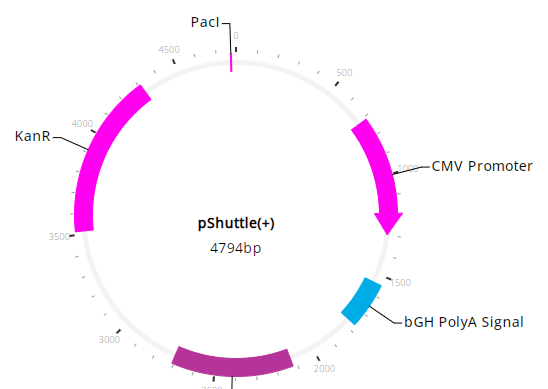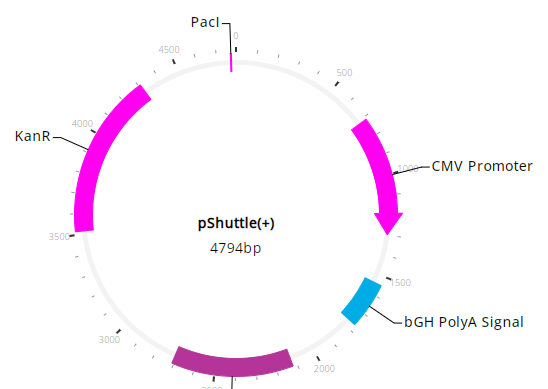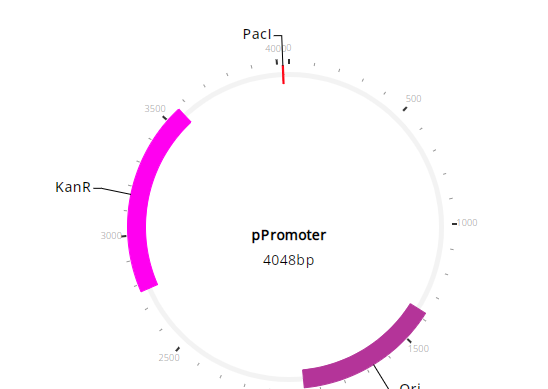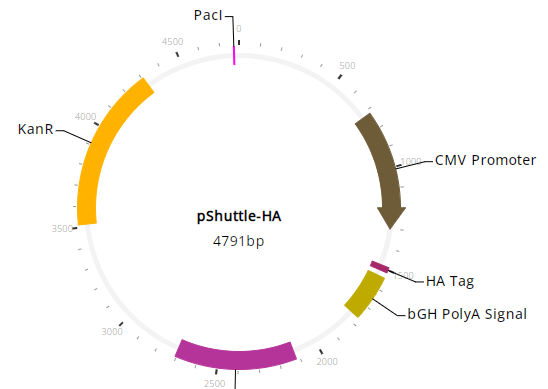Lentivirus miRNA Expression
abm’s miRNA-expressing Lentiviruses enable stable, long-term miRNA expression in your cell line. We offer constructs for both primary and mature miRNA expression to meet diverse research needs. Primary miRNA expression includes the entire surrounding region, ensuring natural processing of both precursor arms. Our mature miRNA vectors are optimized for high expression and efficient processing of the mature miRNA.
Key Features:
- We offer a collection of >6500 mature and primary miRNAs from human, mouse, and rat.
- Lentiviral delivery for stable integration into host cells.
- Lentivirus has a broad host range allowing gene delivery to a wide variety of cell types.
Search our collection of miRNA Technology products using miRNA name, symbol or accession number:
Search results will be displayed here
Available miRNA Expression Vectors
 pLenti-III-mir |
 pLenti-III-mir-GFP |
 pLenti-III-mico |
 plenti-III-mico-GFP |
Top Publications
| 01 | MicroRNA-377 Regulates Mesenchymal Stem Cell-Induced Angiogenesis in Ischemic Hearts by Targeting VEGF. Wen, Z et al. Plos One 9 (9):e104666 (2014). doi:10.1371/journal.pone.0104666 |
| 02 | MicroRNA-146a induces immune suppression and drug-resistant colorectal cancer cells. Tumor Biology 39(5):1-12 (2017). doi:10.1177/1010428317698365 |
| 03 | Down-Regulation of eIF4GII by miR-520c-3p Represses Diffuse Large B Cell Lymphoma Development. Mazan-Mamczarz, K et al. PLoS Genet. 10(1):e1004105. (2014) doi: 10.1371/journal.pgen.1004105 |
FAQs
| What is the Sanger miRBase Sequence Database? |
|
miRBase is a sequence database that has been established by the Sanger Institute. Each entry in the microRNA Registry represents a predicted hairpin portion of a microRNA transcript (termed mir in the database), with information on the location and sequence of the mature microRNA sequence (termed miR). The database provides microRNA gene hunters with unique names for novel microRNA genes prior to publication of results and a searchable database of published microRNA.
|
| When was the latest update of your array sequences? |
|
The content of our arrays has been updated to miRBase Release 16.0.
|
| Which genes are targeted by a specific miRNA? |
|
You can search for predicted and validated miRNA target genes at http://mirbase.org/.
Just type in your miRNA name (eg. hsa-mir-145) or accession number in the search bar and look for the targeted genes. |
|
Both scrambled and blank controls are effective negative controls. However, there are debates over off-target effects when using scrambled sequences. By using a blank vector as negative control, the off-target effect can be eliminated. If your experiment requires a scrambled control over a blank control, we can custom make that for you as well upon request.
|
| Are the inserts in our vector in a pri-miRNA format or a mature miRNA format? |
|
Majority of our inserts are in the pri-miRNA format (about 500-600bp in size). If the miRNA is found in a cluster, the insert will then be the mature miRNA format (about 150bp in size) to ensure that the construct is only expressing one miRNA.
If the R in mir is big (miR) and the accession# is MIMA#########, then it’s typically the Mature format. If the r in mir is small (mir) and the accession# is MI#########, then it’s typically the pre-miRNA format. This information can also be found on the "insert type" section of this product webpage. |
| What primers can I use to screen LentimiRa-GFP-miRNA constructs? |
|
For screening:
Forward primer sequence: Ctcggcatggacgagctgtacaag Reverse primer sequence: TGGAATAGCTCAGAGGCCGAGGC 407bp for the background, 407bp+500 to 600bp for the construct with insert |
| Are both the pre-miRNA and GFP under the same CMV promoter? If yes, is there a translational cleavage site between the two? |
|
Yes, both the pre-miRNA and GFP are under the same CMV promoter.
There is no translational cleavage site between the two. The transcription termination site is after the pre-miRNA, so both GFP and the pre-miRNA are transcribed together, thus making GFP an actual transcription reporter for the miRNA. The pre-miRNA region of the mRNA folds over on itself and forms a stem loop structure which will be processed in the cell by the Drosha/Pasha enzymes and cleaved from the GFP portion of the mRNA. |
